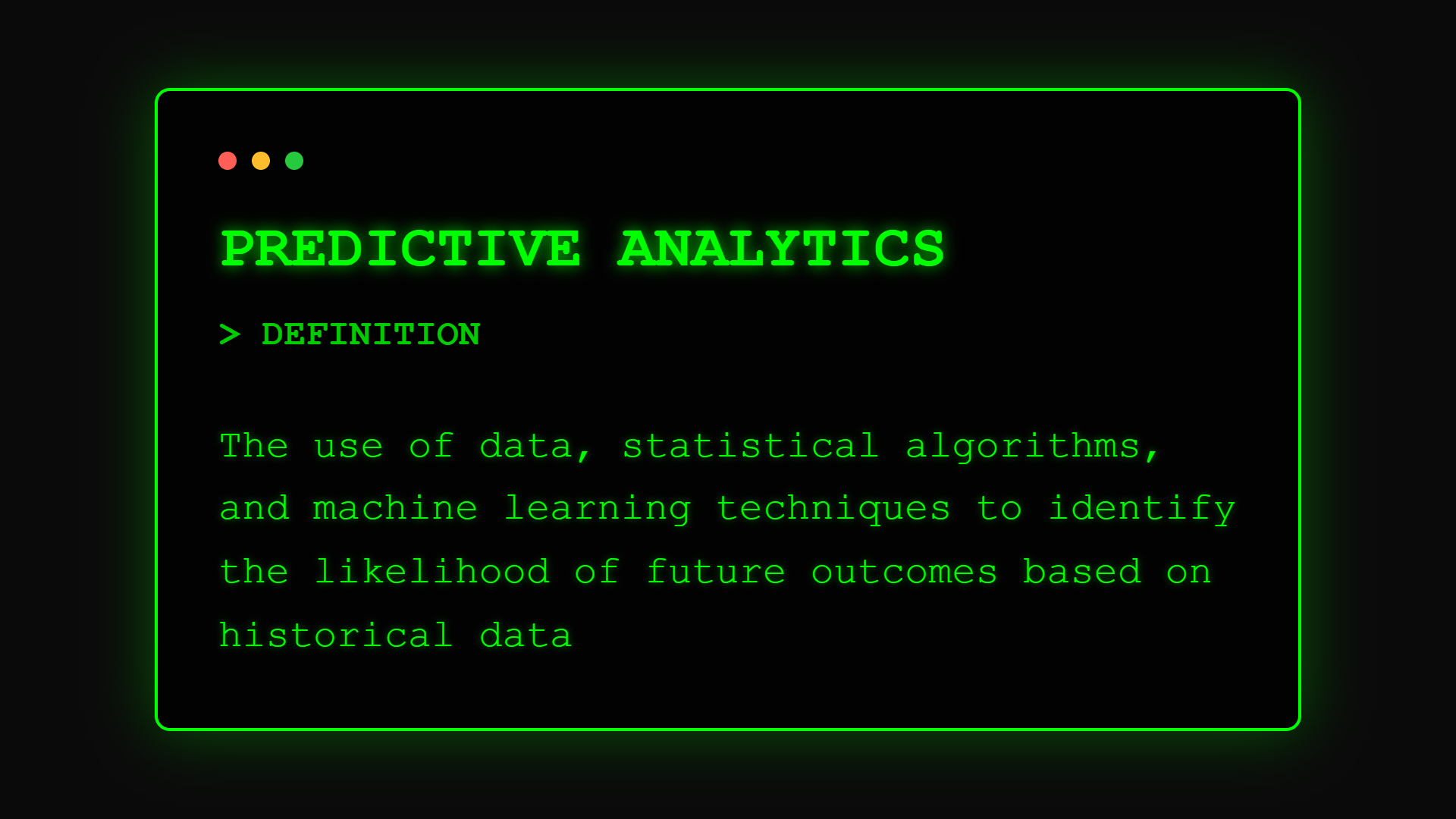AI Terms
What is Predictive Analytics? Your Business Crystal Ball

What if you could see customer churn before it happens? Spot equipment failures weeks in advance? Know which leads will convert? Predictive analytics makes this possible, transforming your historical data into a roadmap of what's coming next.
Evolution and Definition
Predictive analytics evolved from statistical forecasting methods developed in the early 20th century. The term gained prominence in the 1990s as computing power made complex modeling accessible to businesses.
The Institute for Operations Research and Management Sciences (INFORMS) defines predictive analytics as "the use of data, statistical algorithms, and machine learning techniques to identify the likelihood of future outcomes based on historical data patterns."
The field transformed with big data and machine learning, evolving from simple linear forecasts to sophisticated models that can identify subtle patterns across millions of variables.
What This Means for Leaders
For business leaders, predictive analytics means using your accumulated data to anticipate future events, turning hindsight into foresight to make proactive rather than reactive decisions.
Think of predictive analytics as having a seasoned advisor who's seen thousands of similar situations and can spot patterns you'd miss. But unlike human advisors limited by memory and bias, it processes unlimited data objectively.
In practical terms, this enables you to allocate resources before demand spikes, intervene before customers leave, and fix problems before they occur.
Five Essential Elements
Predictive analytics consists of these essential elements:
• Historical Data: Past records that contain patterns like sales transactions, customer interactions, operational metrics, the foundation for prediction
• Statistical Models: Mathematical frameworks that identify relationships: regression for trends, classification for categories, time series for sequences
• Machine Learning: Algorithms that improve predictions through experience, finding complex patterns traditional statistics might miss
• Validation Framework: Methods to test prediction accuracy, ensuring models work on new data, not just historical patterns
• Deployment Pipeline: Systems that deliver predictions where needed: dashboards for executives, alerts for operations, APIs for applications
The Prediction Process
The predictive analytics process follows these steps:
Pattern Discovery: Analyze historical data to find correlations. Customers who exhibit behaviors X, Y, and Z have 80% probability of churning within 30 days
Model Building: Create mathematical representations of discovered patterns, equations that calculate probability based on current indicators
Future Application: Apply models to current data to generate predictions, flagging at-risk customers today based on yesterday's learnings
The power lies in identifying subtle patterns humans miss: hundreds of weak signals that together create strong predictions.
Three Model Types
Predictive analytics generally falls into three main categories:
Type 1: Classification Models Best for: Yes/no predictions like churn/stay, fraud/legitimate Key feature: Assigns probabilities to discrete outcomes Example: Predicting loan defaults with 90% accuracy
Type 2: Regression Models Best for: Numerical predictions like sales forecasts, price optimization Key feature: Predicts continuous values Example: Forecasting monthly revenue within 5% margin
Type 3: Time Series Models Best for: Temporal patterns like seasonal demand, trend analysis Key feature: Accounts for time-based dependencies Example: Predicting holiday shopping patterns
Predictive Analytics in Practice
Here's how businesses actually use predictive analytics:
Retail Example: Target predicts customer pregnancy with 87% accuracy by analyzing purchase patterns, enabling personalized marketing that increased maternity sales by 30%.
Manufacturing Example: Siemens predicts equipment failures 45 days in advance using sensor data analytics, reducing unplanned downtime by 50% and saving millions in lost production.
Healthcare Example: Kaiser Permanente predicts patient readmission risk, enabling targeted interventions that reduced readmissions by 25% while improving patient outcomes.
Begin Predicting
Ready to see your business future more clearly?
- Start with Machine Learning fundamentals
- Explore Business Intelligence for data preparation
- Learn about Time Series Analysis
- Implement with our Predictive Analytics Roadmap
FAQ Section
Frequently Asked Questions about Predictive Analytics
Part of the [AI Terms Collection]. Last updated: 2025-01-10